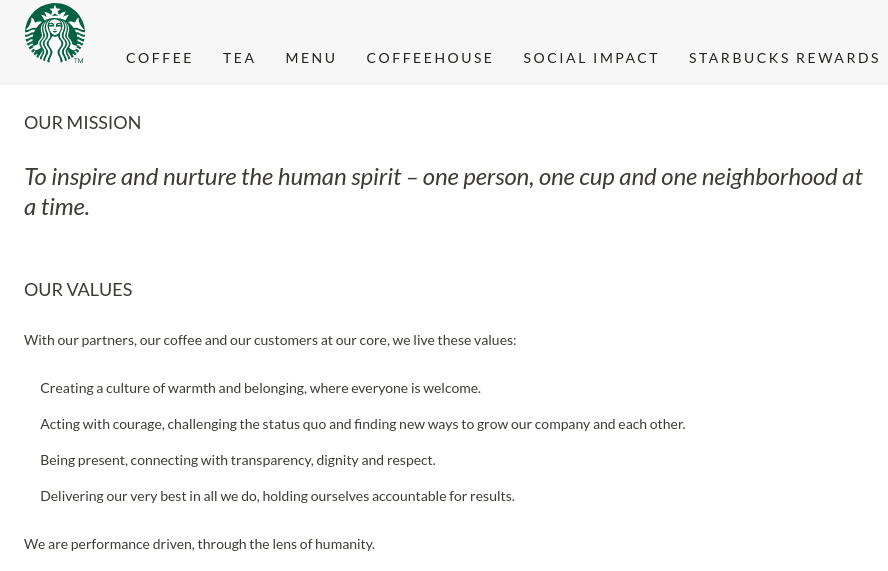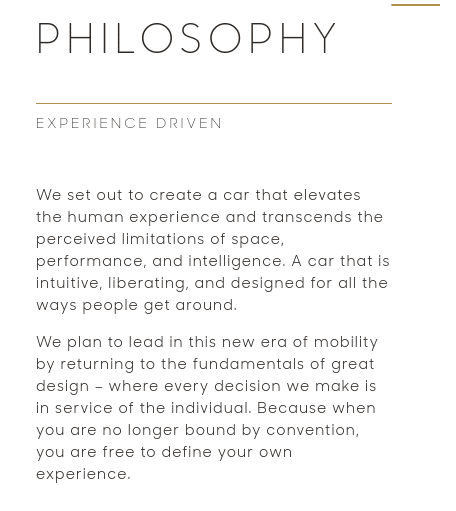How a mission statement can refresh your brand identity

Whether you’re building a brand from scratch or revamping your existing brand identity, marketers should not underestimate the power of a rock-solid mission statement. Colors, graphics, and aesthetic are nice, but they should really serve as supplements to the main diet.
Your mission statement is a short mantra that encompasses everything your brand does and stands for. It expresses your hopes and dreams. And that’s a hefty burden for just a few lines of copy to carry.
In this post, we’ll explain why it’s so important for brands to develop a killer mission statement and how marketers can help brands accomplish this task.
Why is a mission statement so important for branding?
With so many marketing and branding efforts requiring attention, it’s easy to brush over your mission statement. Many brands may assume customers don’t really read them or care enough to think about them too much.
The truth is, brands should be putting a lot of thought into their mission statements for their own good. A mission statement isn’t just a reflection of what your brand does day-to-day: it expresses who you truly are and sets your future path.
Let’s take a look at a few reasons why a mission statement steers so much brand loyalty.
High-quality products and services alone won’t build customer loyalty.
Have you ever felt instantly attracted to someone, gone on a date, and realized the person’s personality didn’t accurately reflect their appearance? Even though we’ve all been there, you definitely don’t want customers to feel this way about your brand. Without a solid mission statement, your company is nothing but a shiny car with an engine that doesn’t run.
In a 2012 study from Harvard Business Review, 64% of respondents said that shared values drove their relationships with brands. While this study seems old, the current landscape has made shared values more important than ever. You don’t need to look further than Nike’s and Gillette’s recent controversial marketing strategies to see that.
Through the process of developing a mission statement, you’ll figure out exactly what your values are as a brand. From there, you’ll be able to narrow down your ideal audience and form real connections with people—hopefully for years to come.
A mission statement sets your brand up for your unique success.
As you sit down with your team to think long and hard about your mission statement, you’ll need to discuss the future of your brand. What do you hope to accomplish? How do you plan to change over the years? What kind of people will you help?
Creating a mission statement will force you to confront many challenging questions head-on. You’ll need to think about your future in ways you may not have before. This process forges a roadmap for the success of your entire brand.
Tweaking colors, graphics, and aesthetic will leave your brand identity hollow.
Customers today—especially millennials and Gen Z—are intelligent, aware, and savvy. They can identify a pretty package that lacks soul and depth. An aesthetic makeover is nice, yes, but your branding will still feel hollow.
Don’t be foolish with shortcuts: your customers will notice. The only way to develop a brand identity that stands the test of time is through a well-thought mission statement.
A mission statement helps you produce relevant and valuable content for your audience.
While important, blog posts are just one small part of the content you’ll create for your audience. In order to reach people in 2019 and beyond, you’ll put a lot of energy into several types of copy and content including:
-
email marketing
-
press releases
-
social media posts
-
whitepapers
You shouldn’t seek out a romantic relationship until you get your own personal identity in order, right? Well, you’ll need a strong brand identity to build long-term relationships with your customers through these mediums (we have much more to say about the email portion, of course).
A thorough understanding of your company through a mission statement will add depth and direction to everything you publish and share.
Thrive Market’s mission statement is all about providing healthy and affordable food. This vision reverberates throughout their blog content with DIY recipes

Steps to revamp your mission statement and develop brand identity.
Take a deep breath. Yes, there’s a lot riding on your mission statement. The process is somewhat like a meditation retreat: it’s not easy but it’s very cathartic.
And just like a meditation retreat, you’ll be happy you went through the suffering once you come out the other side. Use the tips, suggestions, and examples below to guide your mission statement and branding process.
1. Expect to go through an existential crisis.
As you develop your brand identity through a mission statement, you’ll need to ask yourself many questions. It’s not easy and you’ll need to allow some time for the answers to really resonate in your mind.
Who are you? Why do you get up every morning and do what you do? Who do you serve or want to serve? What do you hope to accomplish in the next five, ten, or 20 years? What values drive your actions?
You basically need to throw your brand into an existential crisis. You’ll need to question why your company or organization exists. So, gather your trusted team and get prepared to brainstorm on lots of deep and meaningful questions.
2. Think about how you solve problems or make the world a better place.
According to research from Accenture, 75% of people are more likely to buy from a company that recognizes them by name and remembers things about them. That’s why personalizing your content is crucial for both gaining and retaining customers.
Collecting data on your subscribers can certainly help but it still lacks human connection. As you develop your mission statement, think about how you want to solve problems and improve the world. Your personalization efforts will be much more genuine and effective when you think this through.
Don’t hesitate to reach out to your audience for help with your branding. Send out surveys asking your customers what they love about your brand, problems they face on a daily basis, and areas your company can improve.
Starbucks’ mission statement, for example, is about nurturing the human spirit by creating a warm and welcoming environment.

3. Identify your brand’s core values.
This is another great opportunity to reach out to customers for some answers. Ask your subscribers how they would describe your brand to friends and family members. What would they say about your products and overall service? Which words come to mind when they hear the name of your brand?
Likewise, how would your team members answer these same questions?
Think about the message your brand conveys to the world. Motivation? Thought-leadership? Wholesomeness? There’s no need to write a utopian novel where your brand single-handedly reshapes society here—just throw a couple key concepts or phrases together to get started.
4. Look ahead with optimism and ambition.
You definitely want a mission statement that will remain relevant for many years—preferably the entire life of your brand. This isn’t a lighthearted decision to make. Like with any big decision, you’ll need to look toward the future for answers and plan accordingly.
Again, you don’t want to get overly ambitious with this. Ambition is good, but maintain some modesty or humility, too. Portraying yourself in an overly positive light probably won’t resonate well with your audience base.
The key here is to provide motivation—to both your team and customers.
Looking ahead with optimism and setting some ambitious yet attainable goals for your mission statement will also be useful when you bring on new hires and develop a company culture. Workers and customers alike want a brand that shares not only their values but ambitions for success. They want brands to grow with.
Tesla competitor, Lucid Motors, drafted an ambitious mission statement that appeals to potential investors rather than customers.

5. Get to the point.
Once you’ve made it through the points above, it’s time to step back and take a breather for a few days. Chances are that by now, the words and concepts you’ve brainstormed to build your brand identity have lost all meaning.
That’s a good thing. You’re working hard and putting a lot of thought into your branding.
Now you need to consider how you’ll put these concepts together in a clear and concise format. Too many brands have massive visions for their mission statement. They try to cram as many big words, industry terms, and abstract concepts as they can into their branding.
This just makes people confused. Instead, consider how you can get your message across in a way that’s easy for anyone to understand.
Wrap up
Creating a flashy brand aesthetic without a killer mission statement is like buying a Maserati with no engine under the hood. Your mission statement drives your entire identity—everything else is secondary.
With considerable thought (and maybe an existential crisis or two), you can forge a true brand identity that shapes your company’s future. It will also help you reach the right audiences and create a connection with valuable content. You deserve it and your customers deserve it.
Eager to build a customer journey that aligns with your mission statement? Learn how our automation tools can help you develop journeys that create lasting relationships.
MOST RECENT ARTICLES
Want to engage your audience and grow your brand? Try Emma's robust easy-to-use product today.













